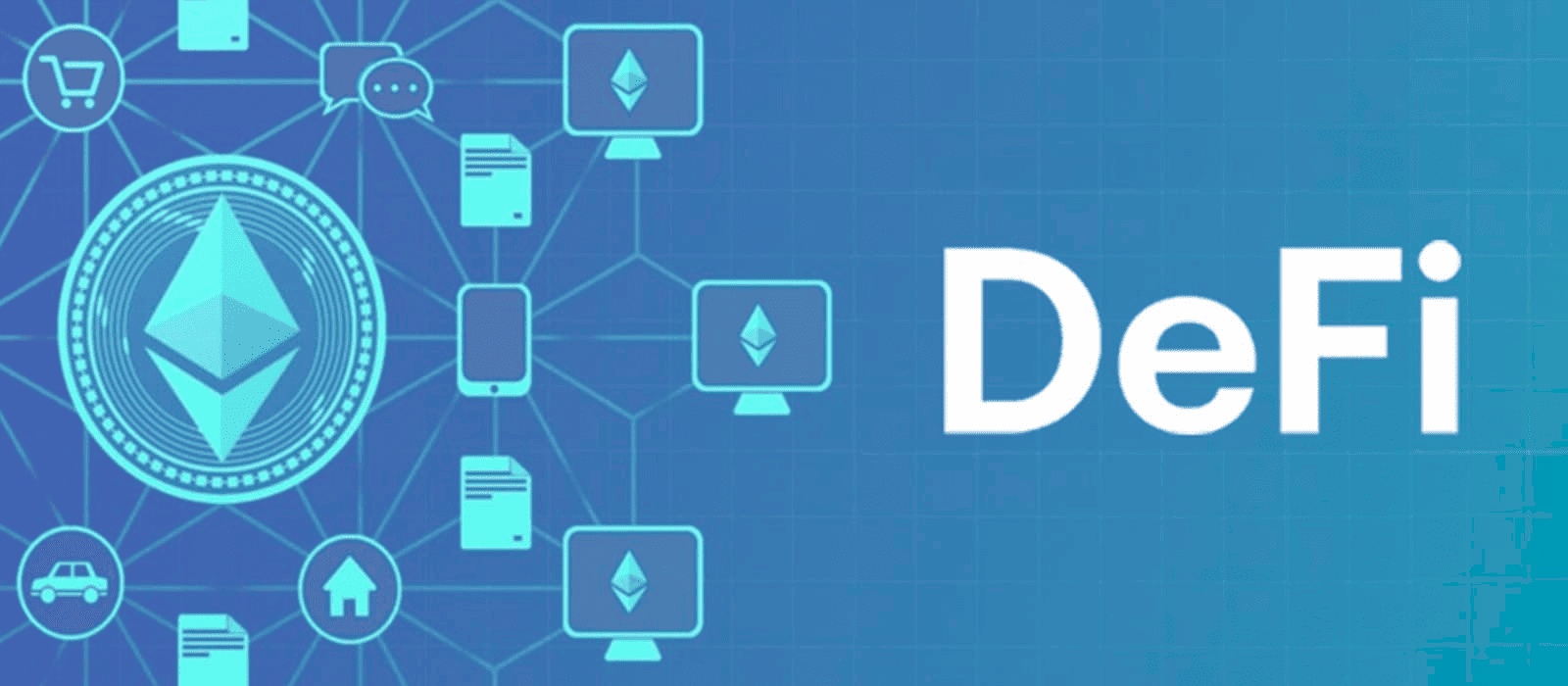Introduction to Ethereum and its significance in the blockchain space
Ethereum DeFi has revolutionized the way financial systems operate, introducing a decentralized framework that empowers users globally. Ethereum, as a leading blockchain platform, enables developers to build and deploy decentralized applications (dApps) that facilitate a range of financial services without the need for traditional intermediaries. This innovation has positioned Ethereum at the forefront of the blockchain space, making it a pivotal player in the evolution of decentralized finance.
Ethereum’s significance lies not only in its ability to host smart contracts but also in its extensive ecosystem that supports a variety of DeFi applications. By providing an open-source platform, Ethereum fosters innovation and collaboration among developers, which has led to the emergence of numerous financial products and services. The flexibility of Ethereum allows for the creation of complex financial instruments such as lending platforms, decentralized exchanges, and yield farming protocols, all contributing to the growing DeFi landscape.
Moreover, Ethereum’s transition to a proof-of-stake consensus mechanism, known as Ethereum 2.0, promises to enhance scalability, security, and energy efficiency. As the DeFi sector continues to expand, Ethereum’s role as a foundational layer becomes increasingly vital. Its architecture not only supports current DeFi applications but also paves the way for future advancements in the blockchain domain.
Overview of smart contracts and their functionality
Smart contracts are self-executing contracts with the terms of the agreement directly written into code. These contracts run on the Ethereum blockchain, ensuring security and transparency in transactions. Ethereum DeFi heavily relies on smart contracts to automate processes, reducing the need for intermediaries and minimizing transaction costs.
The functionality of smart contracts is defined by their ability to perform actions automatically when predetermined conditions are met. This capability allows developers to create sophisticated financial agreements that can execute without human intervention. Some key features of smart contracts include:
- Automation: Smart contracts automate processes, ensuring efficiency and speed in transactions.
- Security: They operate on a decentralized network, making them resistant to tampering and fraud.
- Transparency: All transactions are recorded on the blockchain, providing a public ledger that enhances trust among users.
- Cost-effectiveness: By eliminating intermediaries, smart contracts reduce transaction fees.
In the context of Ethereum DeFi, smart contracts enable various applications such as decentralized lending, insurance, and trading platforms. Their versatility allows developers to create custom financial solutions tailored to specific needs, further driving the adoption of DeFi protocols.
How Ethereum enables decentralized applications (dApps)
Ethereum serves as a robust platform for developing decentralized applications (dApps), which operate without a central authority. These applications leverage the Ethereum blockchain’s features, including smart contracts, to provide users with enhanced security, privacy, and control over their assets. Ethereum DeFi applications exemplify this shift towards decentralization, as they empower users to engage in financial activities without relying on traditional financial institutions.
Key characteristics of dApps on Ethereum include:
- Decentralization: dApps are distributed across a network of nodes, reducing the risk of a single point of failure.
- Open-source: Many dApps are developed using open-source code, allowing for community collaboration and continuous improvement.
- Interoperability: dApps can interact with one another, creating a seamless ecosystem of financial services.
- User ownership: Users maintain control of their private keys, enhancing security and personal sovereignty.
Examples of Ethereum DeFi dApps include Uniswap, a decentralized exchange that allows users to trade cryptocurrencies directly from their wallets, and Compound, a lending platform that enables users to earn interest on their crypto holdings. These applications showcase the potential of Ethereum to transform traditional financial systems into decentralized alternatives, fostering innovation and inclusivity in the financial sector.
The role of Ethereum in the DeFi ecosystem
Ethereum DeFi plays a crucial role in shaping the decentralized finance ecosystem, providing the underlying infrastructure for various financial applications. It enables users to access a range of financial services, such as lending, borrowing, trading, and investing, without relying on traditional banks or financial institutions. The versatility of Ethereum allows for a diverse array of DeFi projects, each contributing to the overall functionality and accessibility of decentralized finance.
Key aspects of Ethereum’s role in the DeFi ecosystem include:
- Liquidity Provision: Ethereum-based platforms facilitate liquidity through decentralized exchanges (DEXs) like Uniswap and SushiSwap, allowing users to trade assets seamlessly.
- Decentralized Lending and Borrowing: Platforms such as Aave and Compound enable users to lend and borrow cryptocurrencies, earning interest on their holdings while eliminating the need for intermediaries.
- Yield Farming: Ethereum DeFi allows users to participate in yield farming, where they can earn rewards by providing liquidity or staking their assets in various protocols.
- Governance Tokens: Many DeFi projects issue governance tokens that empower users to participate in decision-making processes, thus fostering a community-driven approach.
Ethereum’s smart contracts facilitate these functionalities, automating complex processes and ensuring trust among users. The DeFi ecosystem built on Ethereum has attracted billions in total value locked (TVL), demonstrating the platform’s significance in the financial landscape. Furthermore, Ethereum’s role continues to evolve as new projects and innovations emerge, solidifying its position as the backbone of decentralized finance.
Understanding NFTs and Ethereum’s contribution to the NFT market
Ethereum DeFi has not only transformed traditional finance but has also significantly impacted the Non-Fungible Token (NFT) market. NFTs are unique digital assets that represent ownership of specific items, artworks, or collectibles on the blockchain. Ethereum serves as the primary platform for creating and trading NFTs, thanks to its robust smart contract capabilities.
Key contributions of Ethereum to the NFT market include:
- ERC-721 and ERC-1155 Standards: Ethereum introduced standards like ERC-721 and ERC-1155, which define how NFTs are created and managed on the blockchain. These standards ensure compatibility across various platforms and marketplaces.
- Marketplace Development: Ethereum powers numerous NFT marketplaces, such as OpenSea and Rarible, enabling users to buy, sell, and trade NFTs easily.
- Creative Expression: Artists and creators leverage Ethereum to tokenize their work, providing them with new revenue streams and ways to connect with their audience.
- Interoperability: Ethereum’s infrastructure allows NFTs to be used across different platforms and applications, increasing their utility and value.
The explosion of NFTs has led to a cultural shift in how digital ownership is perceived. Artists, musicians, and influencers are increasingly turning to Ethereum to monetize their creations through NFTs. The platform’s contributions to the NFT market have established it as a vital component of the broader digital economy.
Security and scalability challenges of the Ethereum blockchain
Despite the numerous advantages of Ethereum DeFi, the platform faces significant security and scalability challenges. As the demand for decentralized applications grows, these issues have become critical to address to ensure the continued success and adoption of Ethereum.
Key challenges include:
- Scalability: Ethereum’s current infrastructure can struggle to handle the increasing number of transactions, leading to network congestion and high gas fees. Solutions like layer-2 scaling and Ethereum 2.0 aim to enhance scalability.
- Security Vulnerabilities: The decentralized nature of Ethereum does not eliminate risks. Smart contracts can have bugs and vulnerabilities that may be exploited by malicious actors, leading to significant financial losses.
- Centralization Risks: While Ethereum aims for decentralization, the concentration of mining power and the role of large stakeholders can pose risks to the network’s integrity.
- Regulatory Concerns: As DeFi continues to grow, regulatory scrutiny may increase, impacting the development and operation of Ethereum-based projects.
Addressing these challenges is vital for the sustainability of Ethereum DeFi. Ongoing upgrades, community efforts, and innovative solutions will play a crucial role in mitigating risks and enhancing the platform’s capabilities.
Future developments and upgrades in Ethereum
Ethereum is continuously evolving, with numerous developments and upgrades on the horizon that aim to enhance its capabilities within the DeFi space. One of the most significant upgrades is Ethereum 2.0, which will transition the network from a proof-of-work (PoW) to a proof-of-stake (PoS) consensus mechanism. This change is expected to improve scalability and reduce energy consumption, addressing some of the critical challenges currently faced by the Ethereum blockchain.
In addition to Ethereum 2.0, several other upgrades are being implemented to optimize the network’s performance, including:
- Shard Chains: This feature will enable the Ethereum network to process multiple transactions in parallel, significantly increasing throughput and reducing congestion.
- Layer-2 Solutions: Technologies like Rollups and state channels will further enhance transaction speed and reduce costs by processing transactions off the main Ethereum chain while still benefiting from its security.
- Improved Security Protocols: Ongoing enhancements to smart contract security will help mitigate risks associated with vulnerabilities and exploits, fostering greater trust among users.
- Interoperability Enhancements: Initiatives aimed at improving compatibility with other blockchains will facilitate seamless asset transfers and interactions between different ecosystems.
These upgrades are crucial for maintaining Ethereum’s dominance in the DeFi space and ensuring that it can accommodate the growing demand for decentralized financial services.
Comparison with other blockchain platforms
Ethereum is not the only player in the blockchain landscape, and its competitors have emerged with various features and functionalities tailored for DeFi applications. Comparing Ethereum with other platforms can provide insights into its unique strengths and potential weaknesses.
Key competitors include:
- Binance Smart Chain (BSC): BSC offers lower transaction fees and faster confirmation times than Ethereum. Its growing DeFi ecosystem includes platforms like PancakeSwap, but it has faced criticism regarding decentralization and security.
- Solana: Known for its high throughput and low latency, Solana has attracted significant attention for its DeFi projects. However, its relatively younger ecosystem lacks the maturity and established user base of Ethereum.
- Cardano: Cardano emphasizes a research-driven approach and aims for high security and scalability. While it is still developing its DeFi capabilities, it has the potential to compete with Ethereum in the future.
- Polkadot: Polkadot enables interoperability between multiple blockchains, which can enhance DeFi applications by allowing them to communicate and share data. However, it is still in the early stages of adoption compared to Ethereum.
While Ethereum remains the leading platform for DeFi, its competitors are rapidly innovating. Understanding these differences can help users make informed choices about which platform best suits their needs.
Use cases and real-world applications of Ethereum
Ethereum’s versatility has led to a wide range of use cases and real-world applications beyond just decentralized finance. The following examples illustrate how Ethereum is transforming various industries:
- Decentralized Finance (DeFi): Ethereum hosts numerous DeFi applications that enable lending, borrowing, and trading without intermediaries, significantly enhancing financial inclusivity.
- Non-Fungible Tokens (NFTs): Ethereum is the primary platform for creating and trading NFTs, allowing artists and creators to monetize their digital work while providing proof of ownership and authenticity.
- Supply Chain Management: Companies utilize Ethereum to create transparent and traceable supply chains, ensuring product authenticity and reducing fraud.
- Identity Verification: Ethereum’s blockchain can securely store identity information, enabling users to maintain control over their personal data while facilitating efficient verification processes.
- Decentralized Autonomous Organizations (DAOs): Ethereum supports the creation of DAOs, which allow communities to self-govern and make collective decisions through smart contracts.
These use cases demonstrate Ethereum’s potential to disrupt traditional industries and create new economic opportunities. As the platform continues to evolve, further applications are likely to emerge, further solidifying its importance in the blockchain landscape.
Conclusion and the future of Ethereum in the blockchain landscape
Ethereum DeFi has significantly impacted the financial sector by enabling a decentralized alternative to traditional finance. Its robust infrastructure, powered by smart contracts and a thriving ecosystem of dApps, has positioned Ethereum as a leader in the blockchain space. The ongoing developments, such as Ethereum 2.0, are set to enhance its capabilities further, addressing scalability and security challenges.
As Ethereum continues to evolve, it faces competition from emerging blockchain platforms, each offering unique features. However, Ethereum’s established user base, extensive ecosystem, and ongoing innovations give it a strong competitive edge. The future of Ethereum looks promising, with the potential for new use cases and applications that can drive further adoption and integration across various industries.
In conclusion, Ethereum’s role in the DeFi ecosystem is pivotal, and its ongoing advancements will shape the future of decentralized finance. The platform’s ability to adapt and innovate will determine its success in maintaining its position as a leading force in the blockchain landscape.




